A global coalition of around 50 scientists specialising in climate and aviation-linked disciplines has signed an open letter warning of the warming impacts of aircraft contrails and calling on global decision-makers to urgently address the problem. Among the signatories is Jean-Pascal van Ypersele, a Belgian climatologist and former vice chair of the UN’s Intergovernmental Panel on Climate Change (IPCC). Contrails are the most significant of aviation’s non-CO2 effects, said the scientists in their letter. The communiqué was published by Brussels-based climate advocacy group Transport & Environment (T&E), which has also just released a report recommending deviating flight paths that it claims would halve the number of warming contrails by 2040, with a climate benefit substantially larger than the impact of the CO2 emissions caused by the extra fuel burn.
Contrails are formed when vapour and particles of soot emitted from aircraft engines freeze into ice crystals in certain conditions and regions to create clouds that can trap heat.
“Global aviation traffic doubled between 2005 and 2019, and its CO2 emissions grew by 40%,” said the scientists in their letter, “and that just covers part of the problem. Planes cause much more warming than just through their CO2 emissions. Non-CO2 effects of aviation, such as nitrogen oxides and contrails, warm the planet at least as much as aviation’s CO2.
“Most contrails dissolve within a few minutes, but in certain conditions they can persist in the atmosphere, spread out and become artificial cirrus clouds with a net warming effect. The climate impact of these effects has been known for more than 25 years.”
But despite this knowledge, said the scientists, little has been done to address the problem.
“We, aviation and climate scientists, call upon global decision-makers to implement solutions to tackle non-CO2 effects of aviation on top of decarbonisation efforts,” they said.
“This starts by better awareness-raising of the general public. Airline passengers should be informed of the full climate impact of flying when booking a flight and companies performing business flights should include non-CO2 in their corporate reporting.”
As well, said the scientists, large-scale tests should be performed of contrail avoidance measures, supported by research and backed by government policies and monitoring designed to reduce warming contrails and other non-CO2 impacts of aircraft.
“This is a ‘no regrets’ approach that will help to slow climate change by a significant margin,” the scientists said. “Delaying action would be a critical error.”
Their letter closely follows the release of a Transport & Environment report, which states that by “tweaking the flight plans of only a few flights”, contrail-induced warming could be halved by 2040.
The report says the net warming effect of aircraft contrails was “at least as important” as the damage caused by CO2 emissions from aircraft and that just 3% of flights produce 80% of contrail warming. It argues contrail reductions could be achieved simply by changing flight plans slightly to avoid conditions known to cause the phenomenon.
Such a strategy would marginally increase fuel consumption, said T&E, but would still deliver greater environmental benefits by preventing contrail formation.
“Changing flight paths to avoid contrails will only happen on a very small number of flights, and only for a small part of the journey,” says the report, adding that the climate benefits of from avoiding the most warming contrails would exceed the CO2 penalty of rerouting the plane by a factor between 15 and 40 times.
“The extra fuel burnt to avoid contrails would be less than 0.5% on the whole fleet over a year. And on those few flights where rerouting will happen, 80% of the contrail warming of the flight can be avoided with an extra fuel burn of 5% or less.”
The study conservatively estimates that slightly changing the flight path of a Paris – New York flight to avoid contrail formation would cost less than €4 per ticket, covering extra fuel used for the diversion and the use of associated technologies including humidity sensors and satellites.
Commenting on the report, T&E’s aviation technical manager, Carlos Lopez de la Osa, said some in aviation “overstate the scientific uncertainty of warming contrails – but the climate benefits of contrail avoidance are huge, and solutions are improving by the day.
“The aviation industry is being offered a simple and cheap way to reduce its climate impact. By identifying the very few flights that cause warming contrails and then tweaking their flight paths, we can have an immediate effect on contrails warming. So let’s no longer discuss whether we have to do it, but how to do it.”
Photo (T&E): Contrails, short for condensation trails, are created by aircraft flying through cold and humid areas of the atmosphere


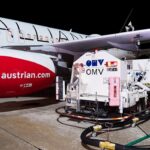
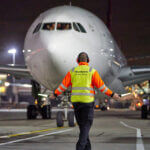
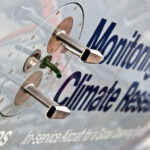

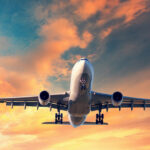

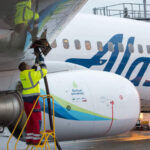
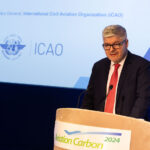
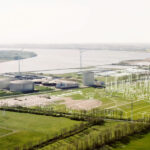
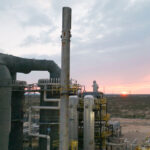
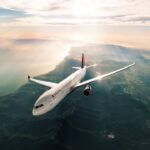



More News & Features
Progress on decarbonising the airline sector has been slow this year, says IATA chief
EASA releases status report on Europe’s SAF production and readiness to meet blending targets
UK government sets out new Jet Zero focus and launches consultation on CORSIA global emissions scheme
European and US research programmes expand to better understand aviation non-CO2 climate effects
New study highlights differing strategies and barriers to decarbonising aviation in UK and Europe
Commentary: China’s fair and equitable solution to civil aviation’s climate challenge